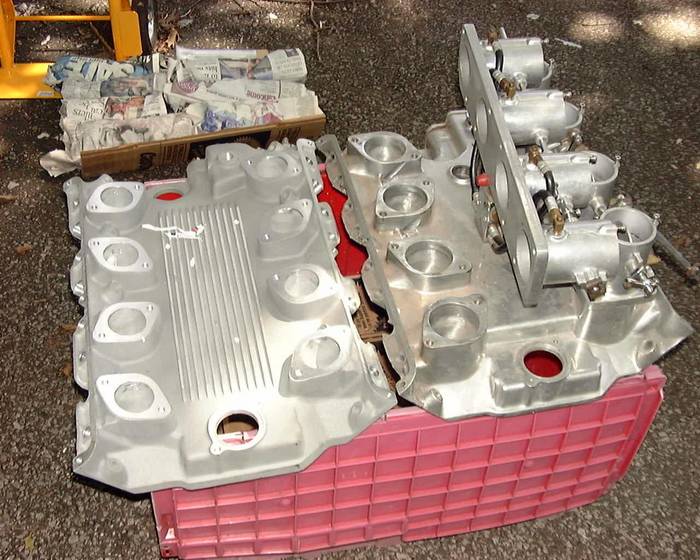Quote:
Originally Posted by blykins

Will a Weber intake support high revs? Using a 250-260 cam in 427ci will make the peak very high...which to make it work properly will require heads that flow and an intake that will flow as well.
Aren't most of the Weber intakes made with tiny, short runners? When I think 6800-7000 rpm, I'm thinking Tunnel Wedge, Dove Spider, or a Victor FE intake....something with lots of plenum volume, long runners, etc.
|
With a weber intake, the intake runner length is the length from the valve to the open bell of the velocity stack, not the distance to the intake-carb interface. With a weber intake, the "plenum" would be the atmosphere, not like a plenum with a standard type intake. Actually, for high rpm's, you want shorter runners, not longer runners. What you are tryingg to accomplish is to catch the pressure wave bouncing off the closed intake valve, and then returning the next time the intake valve opens to catch the wave for a "pressure ram boost". The higher the rpm's, the shorter interval between a valve opening and closing, and therefore you need to runner of shorter length to catch the wave, as the pressure wave travels at about the speed of sound. You can calculate the optimum length.
48IDA's are not big enough to make alot of high rpm horsepower for a large ci engine. The rare and expensive weber 58 downdrafts were designed for 289 ci indy engines. There were some intakes made for these carbs for FE 427's with Hi-Riser heads, and some were converted for fuel injection like the one below, on the right. The intake on the left is a Blue Thunder FE intake for weber 48 IDA's
